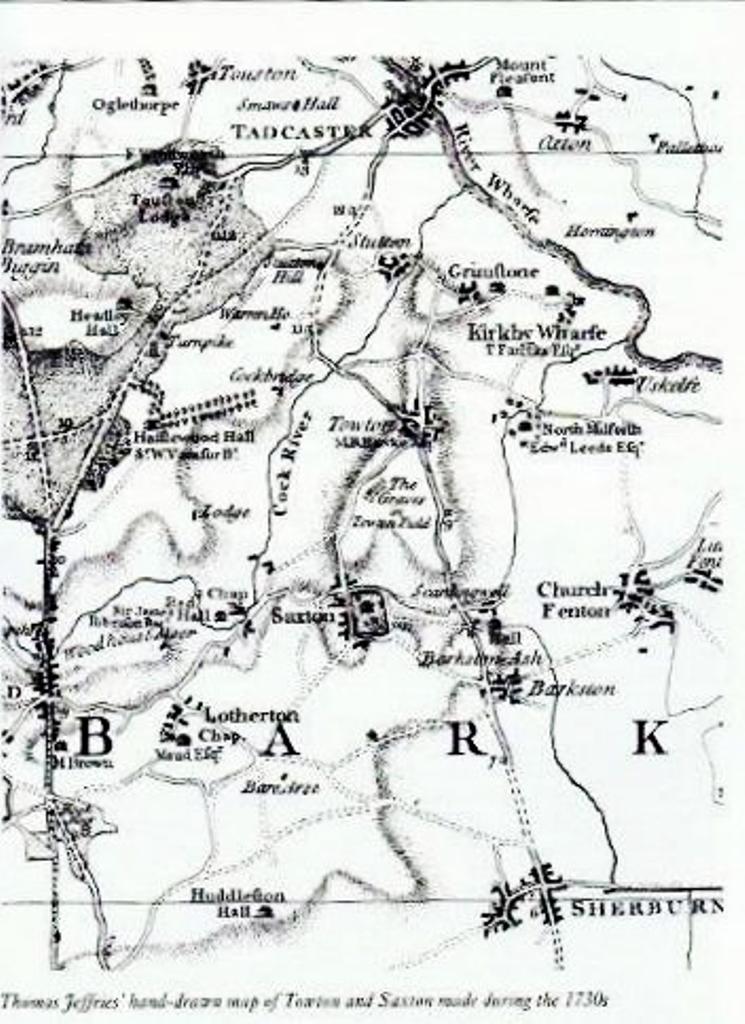The Most Brutal Day in English History
Back to the Main Historical Society page
Back to the Barwicker Contents page
The Most Brutal Day in English History
Barwicker No. 118 June 2015
On Palm Sunday, 29th March, over lOOO people attended the annual
Towton Battlefield Society commemorative event and battlefield walk.
It was exactly 554 years to the day since the l461 battle. The weather
was poor, it was cold, wet, windy and muddy but nobody really cared
because the battle was fought in a raging snowstorm as thousands
perished in the snow and ice in a storm of biblical proportions.
Supporters of the event are not deterred by trivialities like bad weather;
most will be back next year with increased interest in the battle. But
why do people come, what is the interest to them, why do people care?
Towton is a unique unspoilt medieval battlefield, the scene of
England's biggest, worst and bloodiest battle. It was a nightmarish
civil war where the sons and grandsons of the victors of Agincourt
slaughtered each other. The two competing kings were here with all
'their power,' and most of the active nobility were here with their
private armies to support either the House of Lancaster or the House of
York. Huge numbers were involved. The age of chivalry had gone and
no quarter was given or asked for as bloodlust, revenge and cruelty
marked out the abattoir of the battlefield. Thousands of archers and
men at arms fought to destroy and maim fellow countrymen. Each side
knew the calibre of the finest archers in Europe and the quality of the
soldiers; they knew what they were going to get!
Men were killed at Ferrybridge, Dintingdale, Towton and up to the
gates of York. It is estimated that 75,000 soldiers fought and 28,000
killed. Many wounded soldiers died later from wounds and blood
poisoning, some are buried in Barwick churchyard.
In our short battlefield service we try to envisage what happened on
that fateful day. Historians write that it was a national tragedy, with
losses comparable to the first day of the Somme, it was the costliest
encounter ever fought on English soil, marking a new low point in
barbarity, George Goodwin writes that 'it was the most brutal day in
English history.'
We think of the common soldiers. Some had been on the road for
weeks. They didn’t know where they were, living rough, enduring bitter
hardship, hunger and great privation in the savage weather. The
Yorkists came from Wales, the Midlands, East Anglia and the South.
Lancastrians mainly came from the North and Scotland. Most men
would have feared either being wounded or killed that day.
It was 100 years before the Reformation, 65 years before William
Ty n d a l e’s New Testament was available in English; William Caxton’s printing of
religious texts came after 1476. Thus it was a Catholic age and priests
would be going round saying mass and men would be frantic to see the Host
at the Sacring. To see the Host was to see Jesus and be blessed, all sins would be
forgiven. Reading from the TBS programme, we all join in saying the Middle English
version of the Lord's Prayer, which the soldiers would have known, and then
we repeat the prayer in Latin. The service ends when the re-enactors come and
place wreaths and palm crosses by the wooden battlefield Cross to be followed
by the hundreds who have been involved. The wreaths are later placed by Dacre’s Cross.
This whole event is a minor miracle in itself as people feel that it's
important to be present and involve themselves in something alien to their normal lives.
We all know that something important happened at Towton, but what does it mean
to us? Come next year and find out!
MARTIN TARPEY
Back to the top
Back to the Main Historical Society page
Back to the Barwicker Contents page

